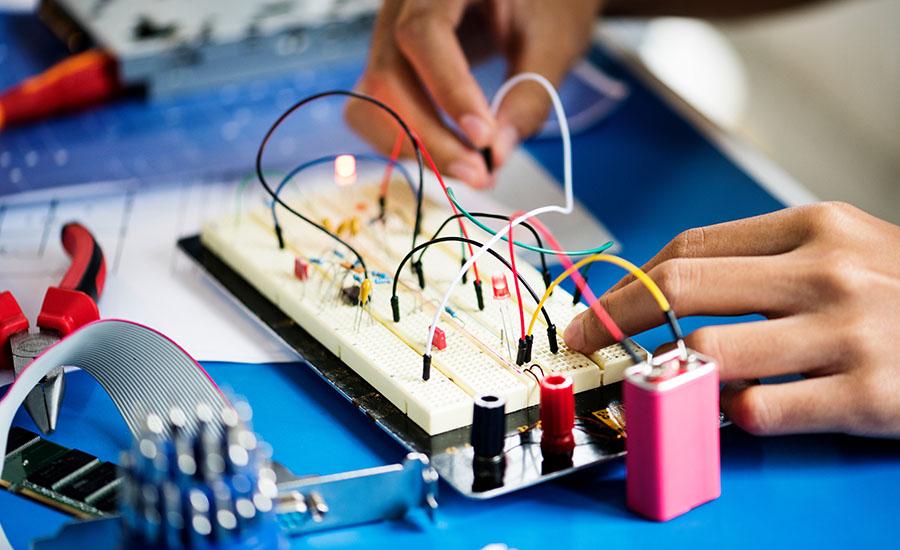Grades:
10th Grade, 12th Grade
This lesson builds on the Part 1 of Urbanization Impacts in the HS Environmental Science classroom. In this lesson, students are utilizing their knowledge to create models of solutions to the
Grades:
3rd Grade, 4th Grade, 5th Grade
Students will determine the best materials to use to build their school budget. They will create several garden models and determine which garden they ultimately want to build. Students will then
Grades:
6th Grade, 7th Grade, 8th Grade
This lesson shows how to use VEX IQ robots in your classroom. There are links to the VEX free resources that can be used to help new or experienced robotics teachers.
Grades:
5th Grade
In this lesson students will get the chance to mine for ore but then work on the processing phase and manufacturing phase of mining. Students will mine their ore (peanuts), process their ore (shell
Grades:
3rd Grade
In this lesson there will be several small activities; on the first day students sort seeds and describe the different characteristics of the seeds; as an introduction and to engage students. Students
Grades:
7th Grade, 8th Grade, 9th Grade, 10th Grade, 11th Grade, 12th Grade
The purpose of this project is to have students use their knowledge of series and parallel circuits to create an electronic greeting card or an electronic game. This lesson should be given after
Grades:
5th Grade
In this lesson, your students will be engaged in learning about forces and motion while using fractions in line plots. Students will record the spin time of different objects, they will display data
Grades:
10th Grade, 11th Grade, 12th Grade
This is part 2 of a two-part series. This lesson looks deeper into early electronic encryption tools and how they relate to cryptography today. The tools discussed are: Hebern Rotor Machine, Enigma
Grades:
9th Grade, 10th Grade, 11th Grade, 12th Grade
Slow Sustainable Fashion T-Shirts combines art, design, math, and technology. Student will gain and understanding of sustainable slow fashion design by deconstructing a recycled printed t-shirt and
Grades:
4th Grade
Students will act as scientists who are tasked with designing and modeling a new plant that has special adaptations to help it survive in an extreme environment!
Grades:
2nd Grade
This lesson is to introduce students to coding using EdScratch and Edison Robots. Students use LEGOs to build a house for grandma and figure out a way to keep her safe.
Grades:
5th Grade, 6th Grade, 7th Grade, 8th Grade
Students use the engineering design process to plan, create, code, and share a unique, functioning illuminating e-textile sweater using a Circuit Playground Express (CPX).
Grades:
Kindergarten
Kindergarten students will be given a STEM case to solve! The goal is to build a bridge for two different sized/weight of vehicles. Students will research types of bridges and decide which bridge will
Grades:
6th Grade, 7th Grade, 8th Grade
This lesson integrates technology (microbits), engineering design, and career exploration for middle school students. It encourages hands-on learning and critical thinking through the creation of
Grades:
2nd Grade
Students will learn about the life cycle of a butterfly. After learning about the butterfly life cycle, students will engineer a butterfly out of various materials and make it fly without touching it.
Grades:
3rd Grade, 4th Grade, 5th Grade, 6th Grade, 7th Grade, 8th Grade
On the second day students use more complex coding, the built in camera for taking pictures and experience FPV. It has 3 missions total in this lesson. This lesson also uses yaw to keep the camera
Grades:
7th Grade
Students design and build tools for collecting meteorology data. Then students will collect data to make predictions about future weather moving into the area.
Grades:
4th Grade, 5th Grade, 6th Grade, 7th Grade, 8th Grade
Students create a polling station, using student-made buttons, a circuit, and coding a Micro:Bit, to discover and report current student trends.
Grades:
7th Grade
Students design and build a bumper car to test Newton's third law of motion.
Grades:
5th Grade
Within this hands-on lesson, students use the engineering design process to create a device that will protect an egg from a two-story drop. They work within small groups and test their creation and
Grades:
6th Grade
Students are challenged to create a battlebot that will be powered by a sphero and compete against other bots. Each bot will have an inflated balloon attached to the back. The objective is to pop
Grades:
3rd Grade, 4th Grade, 5th Grade, 6th Grade, 7th Grade, 8th Grade, 9th Grade, 10th Grade, 11th Grade
This engineering design STEAM lesson is intended to be introduced as a playful and inventive approach to learning simple machines. Students explore levers, cams, cam followers, linkages, and other
Grades:
1st Grade
In this hands-on lesson, students use the engineering design process to create a balloon powered car that travels at least 5 feet. This is a fun and engaging way for students to experience science in
Grades:
4th Grade, 5th Grade, 6th Grade
In this lesson, students will explore the forces of flight in rockets. They will construct a rocket using straws, clay, and index cards. Students will then use a launcher to launch their rockets and
Featured Lesson Plans
Check out these notable lesson plans.

Grades:
7th Grade, 8th Grade
In this outstanding lesson, students will explore circuitry through working collaboratively to build a working floor piano out of simple materials. Students explore the engineering design process by

Featured
STEM in the Garden- Wild Bee Hotel
Grades:
3rd Grade
Third grade students will apply their knowledge of the significance of bee pollination by designing and creating a Wild Bee Hotel in a collaborative group which will incorporate literacy, mathematical

Grades:
5th Grade, 6th Grade, 7th Grade, 8th Grade
In this outstanding lesson, students will apply their knowledge of how natural and human-caused changes to habitats or climate can impact our world in a stop motion film. The lesson covers a Science


